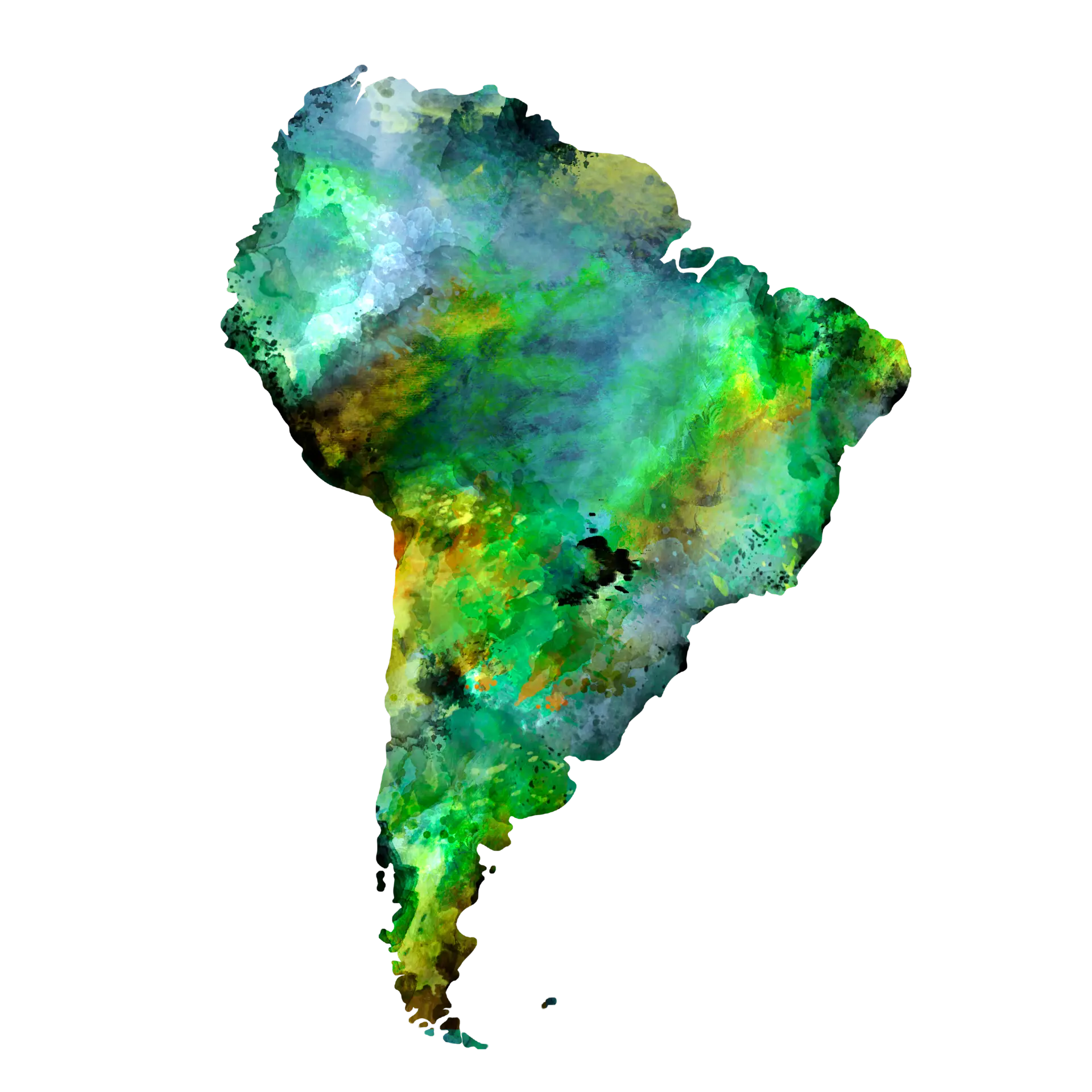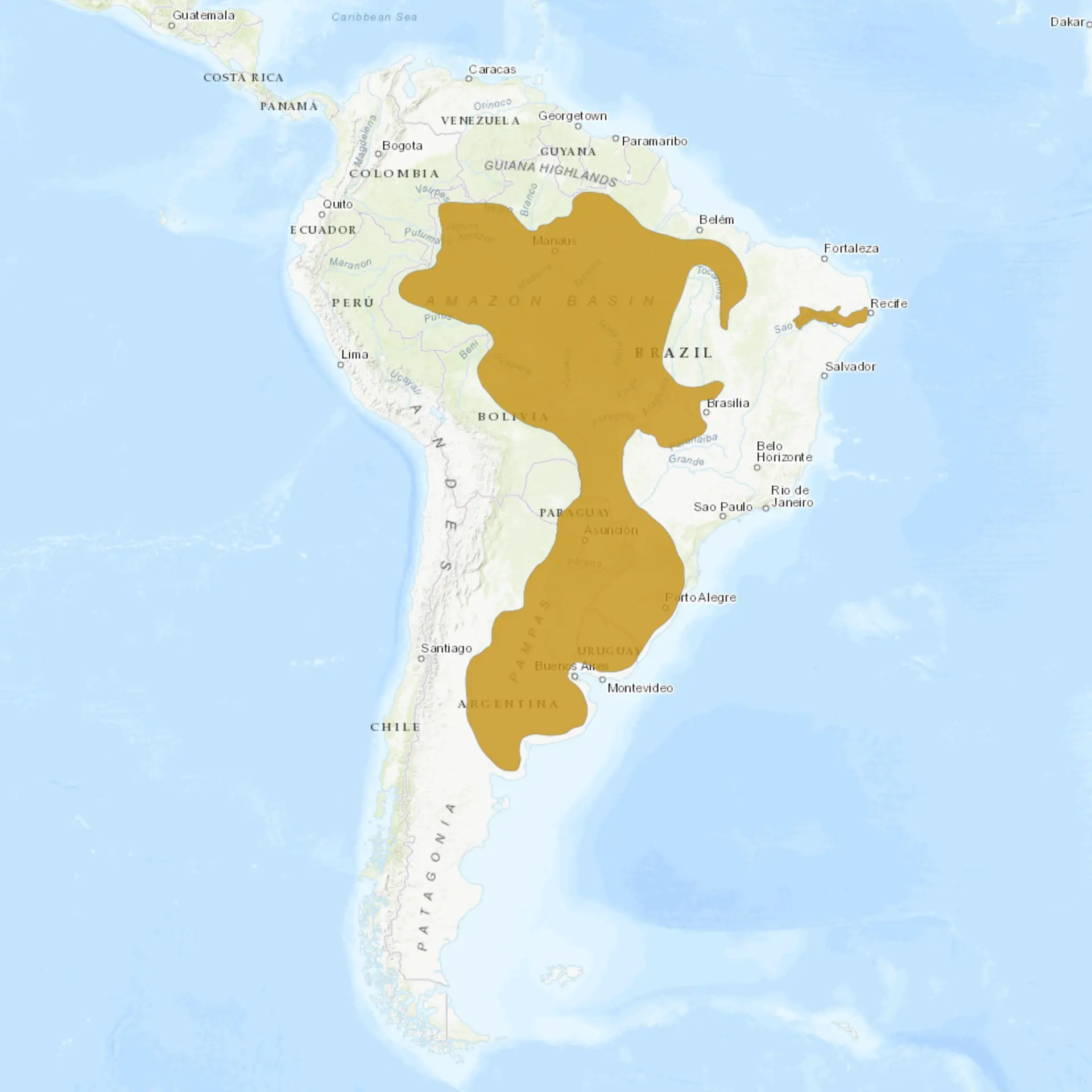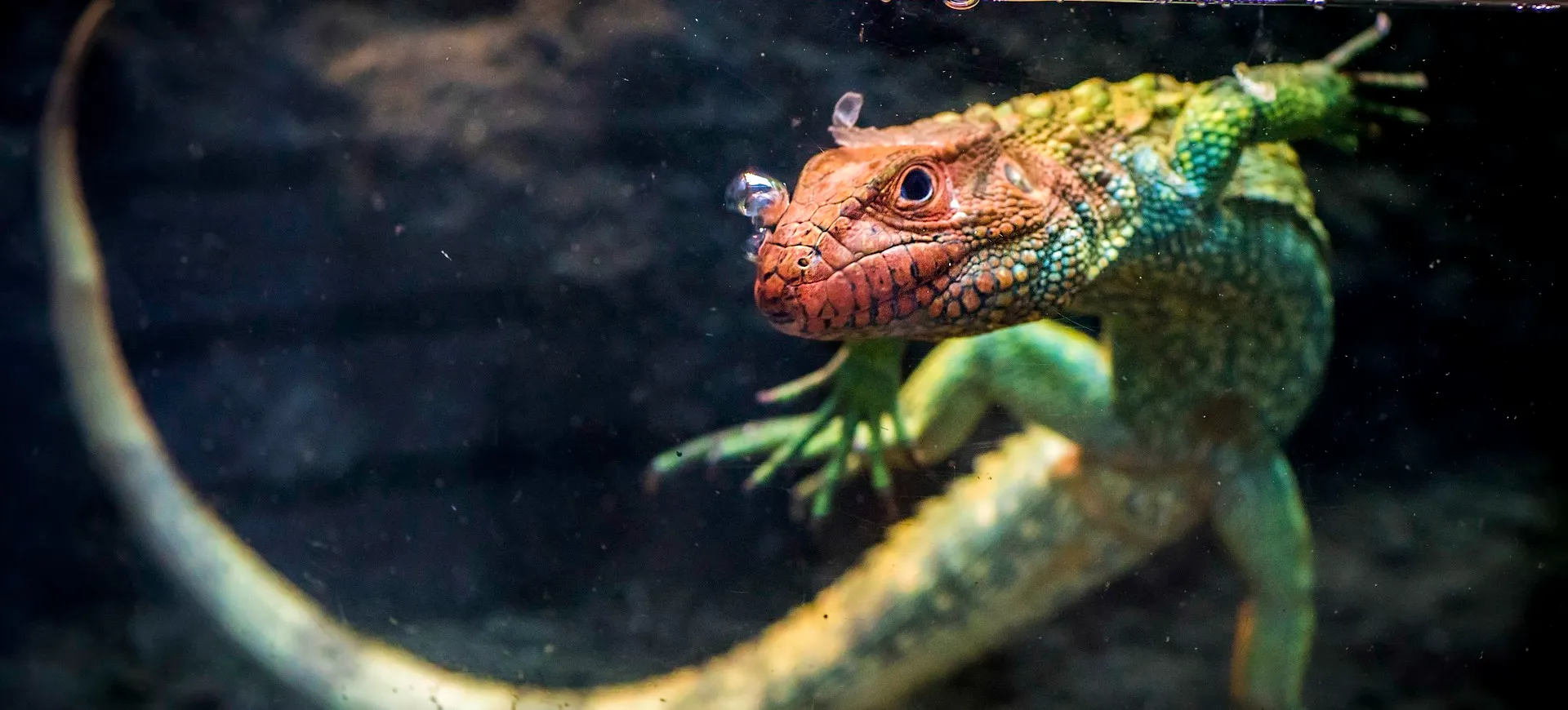Overview
The Black-and-white Tegu, scientifically known as Salvator merianae, is a large and robust lizard native to South America. These reptiles are characterized by their distinctive black-and-white coloration, which is more pronounced in juveniles and tends to become more mottled with age. Adult Black-and-white Tegus can reach lengths of up to 4 feet, making them one of the largest species within their genus. They are known for their intelligence and adaptability, exhibiting a range of behaviors that have fascinated herpetologists and reptile enthusiasts alike.
In their natural habitat, Black-and-white Tegus are versatile predators and scavengers. Their diet is omnivorous, consisting of fruits, vegetables, eggs, insects, and small vertebrates, reflecting their opportunistic feeding habits. This dietary flexibility contributes to their success in a variety of environments, from forests to savannas. Tegus are also known for their burrowing behavior, creating extensive networks of tunnels for shelter and thermoregulation, showcasing their ecological impact on their surroundings.
The reproductive cycle of the Black-and-white Tegu involves a distinct breeding season during the warmer months when males display increased aggression and territoriality. Females lay a large clutch of eggs, which they bury in nests constructed within their burrows or in sunny locations to ensure optimal incubation temperatures. The care and protection of the nest site by the female tegu underscore the species’ reproductive investment, which is critical for the survival of the offspring in a competitive environment.
Current distribution:
The Black-and-white tegu is native to Argentina, Brazil, Paraguay, and Uruguay, where it is widespread and relatively common in suitable habitats. Within its native range, populations are most abundant in subtropical and temperate regions with access to terrestrial and aquatic resources. Due to its popularity in the exotic pet trade, this species has been introduced to other regions, including the southeastern United States, where it has established invasive populations in Florida, Georgia, and South Carolina.
The tegu thrives in warm climates in its introduced range, often competing with and preying on native wildlife. Its ability to exploit a wide variety of habitats and food sources has allowed it to spread quickly in these areas, posing a threat to local ecosystems. Conservation efforts in its native range focus on managing sustainable hunting practices, while invasive populations are being controlled through trapping and removal programs. The tegu's adaptability and resilience make it both a conservation challenge and a fascinating species to study.
Physical Description:
Black-and-white Tegus possess a striking appearance, with their bodies covered in a pattern of black and white scales that serve as camouflage in their natural habitat. Juveniles exhibit a more contrasting pattern, which becomes more blended in adults. These tegus have powerful limbs and long, whip-like tails, which can be used defensively against predators. Their heads are large and robust, equipped with strong jaws capable of crushing hard-shelled prey.
The size and build of Black-and-white Tegus reflect their predatory and omnivorous lifestyle. Adult males are typically larger and more robust than females, with some males reaching up to 4 feet in length and weighing over 10 pounds. This size difference is also evident in their head and jaw structure, with males possessing more pronounced jowls. The tegus’ scale pattern not only provides camouflage but also plays a role in thermoregulation, with the dark colors helping to absorb heat from the sun.

Lifespan: Wild: ~15 Years || Captivity: ~20 Years

Weight: Male & Female: 10-15 lbs (4.5-6.8 kg)

Length: Male & Female: 36-48 in (91-122 cm)

Top Speed: 17 mph (27 km/h)
Characteristic:
Native Habitat:
Black-and-white Tegus are native to South America and inhabit various environments, from rainforests to savannas and semi-deserts. They are particularly common in Brazil, Paraguay, Uruguay, and Argentina, demonstrating their adaptability to climatic and ecological conditions. Their ability to thrive in diverse habitats is partly due to their burrowing behavior, which provides shelter from predators and extreme weather and a site for nesting.
The preferred habitat of Black-and-white Tegus includes areas with abundant ground cover and access to water bodies, which are essential for hydration and cooling. Their presence in these habitats has significant ecological implications, including the dispersal of seeds through their diet and the creation of caves, which can be used by other species, highlighting their role as ecosystem engineers.
Biomes:
Biogeographical Realms:
Continents:
Diet:
Diet & Feeding Habits:
The Black-and-white Tegu is an omnivorous species with a diverse diet that includes fruits, vegetables, eggs, insects, and small vertebrates such as rodents and other lizards. This varied diet indicates their adaptability to different environmental conditions and the availability of food resources. In the wild, tegus are opportunistic feeders, often scavenging for meals in addition to active hunting, allowing them to thrive in various habitats.
Feeding behavior in Black-and-white Tegus is characterized by using acute senses, including sight and smell, to locate food. They are known to be persistent and intelligent hunters, employing strategies such as ambush and pursuit to catch prey. In captivity, their diet can be easily replicated with a combination of commercially available reptile food, supplemented with fresh fruits and vegetables, and occasional protein sources like eggs or lean meats, reflecting their natural dietary preferences.
Mating Behavior:
Mating Description:
The mating behavior of Black-and-white Tegus is characterized by a seasonal increase in aggression and territoriality among males, which compete for access to females. During the breeding season, males display vivid coloration and engage in visual and physical displays to attract mates and deter rivals. Females lay a large clutch of eggs, ranging from 10 to 30, which they bury in nests within their burrows or other protected sites to ensure optimal incubation conditions.
Post-mating, the female’s investment in the next generation continues with the guarding of the nest site, highlighting the tegus’ reproductive strategy focused on offspring survival. The eggs incubate for several months before hatching, with the timing dependent on temperature and humidity conditions. Juvenile tegus are independent of birth and equipped with the instincts and abilities to survive, although they remain vulnerable to predation and environmental hazards.
Reproduction Season:
Birth Type:
Pregnancy Duration:
Female Name:
Male Name:
Baby Name:
Social Structure Description:
Black-and-white Tegus are generally solitary animals, with individuals establishing and defending territories from others of the same species. These territories provide access to food, shelter, and breeding sites, essential for their survival and reproductive success. During the breeding season, male tegus become more territorial and aggressive, competing for the attention of females. Despite their solitary nature, tegus can exhibit social behaviors, particularly during interactions related to mating or territory defense.
The social structure of Black-and-white Tegus, characterized by territoriality and solitary living, reflects their ecological role as predators and scavengers. Understanding their social dynamics is important for managing their wild and captivity populations, providing insights into their behavior and needs. This knowledge is crucial for conservation efforts and for those keeping tegus as pets, ensuring their well-being and promoting positive interactions with humans.
Groups:
Conservation Status:
Population Trend:
While the Black-and-white Tegu is not currently listed on the IUCN Red List, its populations in the wild are subject to various pressures, including habitat loss, hunting, and the pet trade. In their native range, tegus are generally considered common, although specific population studies are limited. The species’ adaptability has allowed them to maintain stable populations in various habitats, but ongoing monitoring and conservation efforts are necessary to ensure their continued survival.
In areas where they have been introduced, such as Florida, Black-and-white Tegus are monitored closely due to their potential impact on local ecosystems. Efforts to control their populations include trapping and habitat management strategies to reduce their numbers and prevent further spread. Conservation and management strategies for Black-and-white Tegus require a balanced approach, considering their ecological role in native habitats and the challenges their introduction to new environments poses.
Population Threats:
The main threats to the Black-and-white Tegu in their native range include habitat destruction due to deforestation and agricultural expansion, hunting for their skin and meat, and capture for the pet trade. These factors can lead to localized declines and stress on populations, emphasizing the need for sustainable management practices. In non-native regions, tegus threaten local wildlife through predation and resource competition, making their management a conservation priority.
The adaptability of Black-and-white Tegus allows them to survive in various conditions, making them a resilient invasive species when introduced. Managing these threats requires coordinated efforts between conservationists, regulatory agencies, and the public to protect native ecosystems and the tegus’ long-term survival in their natural habitats.
Conservation Efforts:
Conservation efforts for the Black-and-white Tegu include habitat preservation, research into their ecology and behavior, and trade regulation to prevent overexploitation. In their native South America, protected areas and conservation programs aim to safeguard tegu populations and their habitats, promoting ecosystem health and biodiversity. Education and outreach initiatives are also important for raising awareness about the species and the importance of conservation.
In areas where Black-and-white Tegus are considered invasive, efforts focus on population control, including trapping and removal, to mitigate their impact on native species and habitats. Research into effective management strategies and public participation in control programs are critical to these efforts. Conservation and management of Black-and-white Tegus highlight the importance of understanding species’ ecological roles and the impact of human activities on wildlife and ecosystems.
Additional Resources:
Fun Facts
- Black-and-white Tegus are among the largest tegus, with some individuals reaching 4 feet long.
- They are known for their intelligence and can be trained to respond to their names and perform simple tasks.
- In colder regions, Black-and-white Tegus can enter a state of brumation and hibernation to survive the winter.
- Their powerful jaws and sharp teeth enable them to consume various prey, from fruits to small mammals.
- Black-and-white Tegus are capable swimmers and can be found near water bodies in their natural habitat.
- The species has been observed using its tongue, similar to snakes, to sense chemical environmental cues.
- Tegus have a third “eye” on the top of their head, a light-sensitive organ that helps regulate their circadian rhythms.
- Despite their fearsome appearance, Black-and-white Tegus can become docile in captivity and are popular pets among reptile enthusiasts.
- They play an important ecological role in their habitats, acting as seed dispersers and controlling insect populations.
- Conservation efforts for Black-and-white Tegus include habitat preservation and research into their behavior and ecology.










